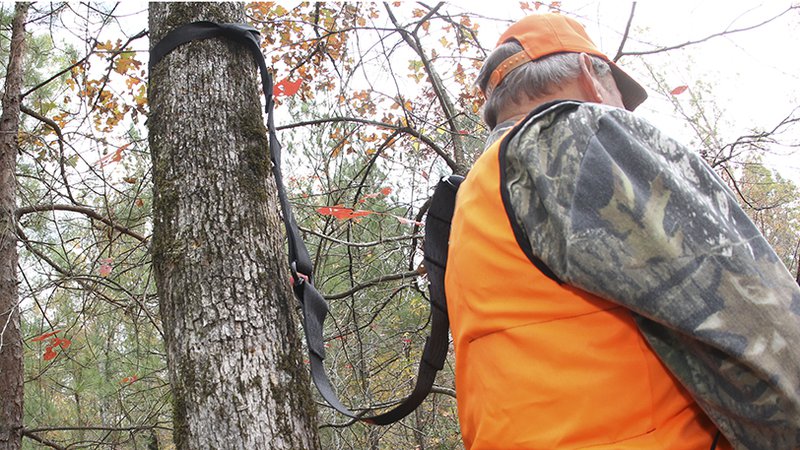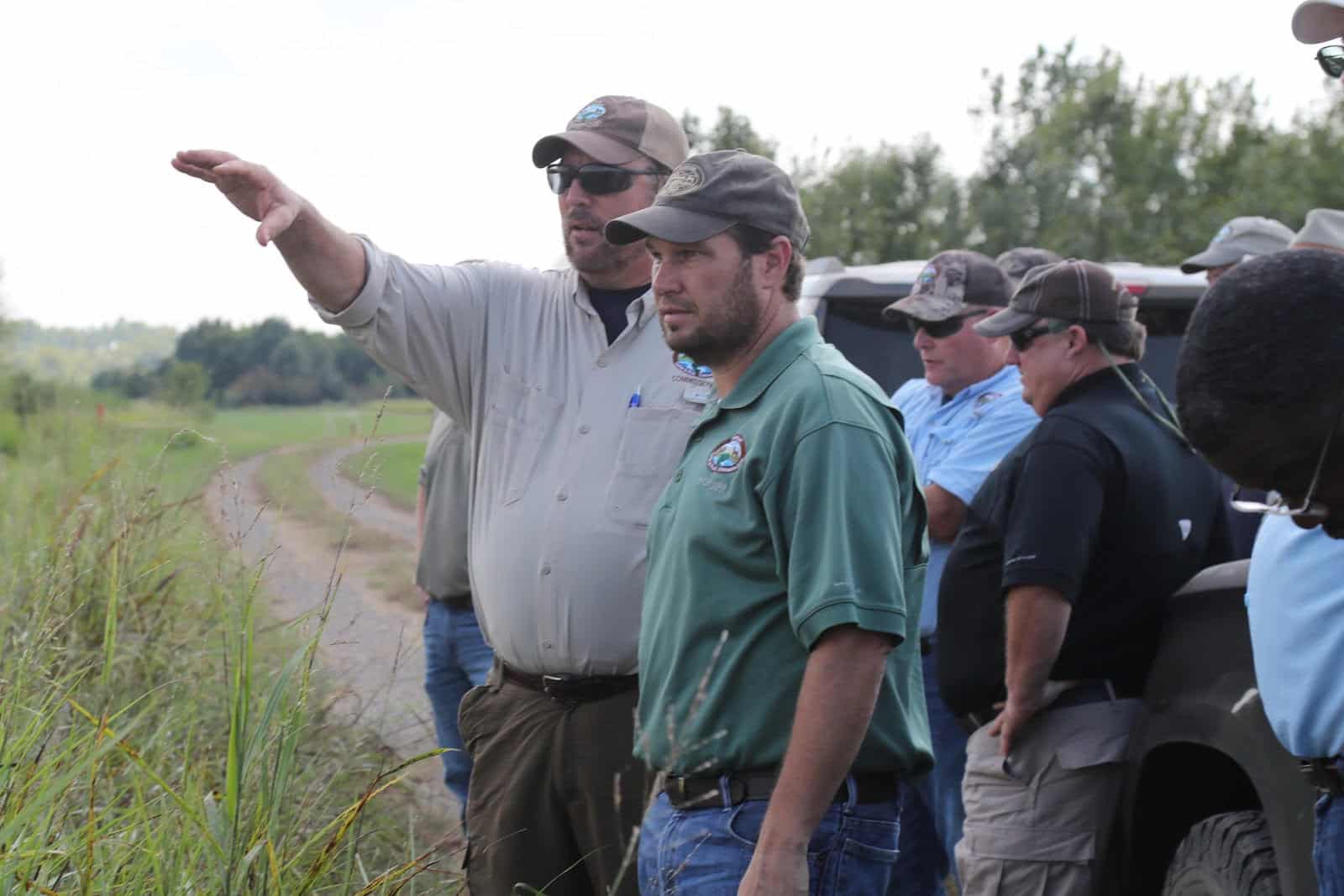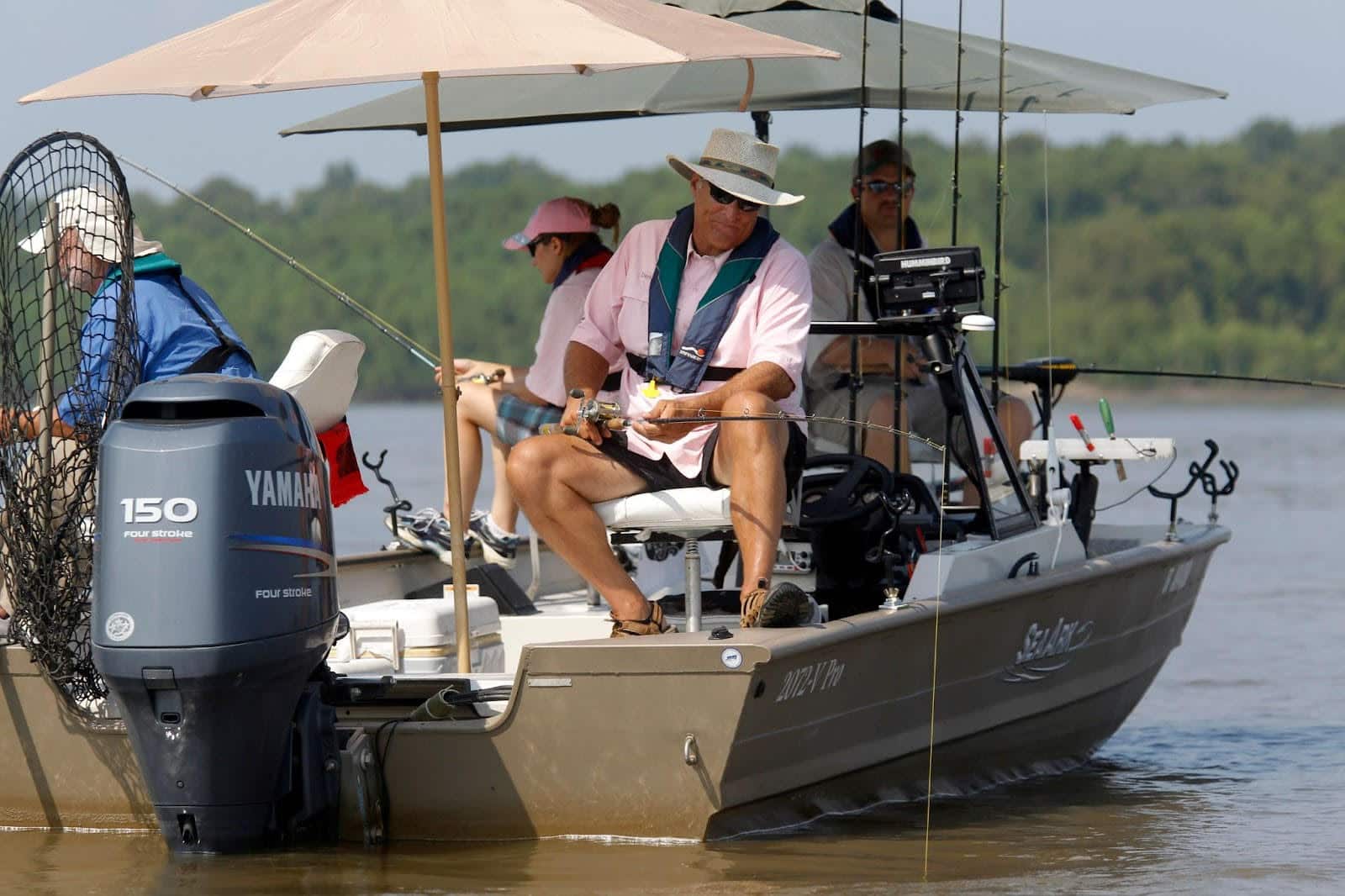Hunters reminded to check tree stands, harnesses before heading to the woods
ON 10-10-2017

Oct. 10, 2017
Randy Zellers
Assistant Chief of Communications
Twenty feet doesn’t sound like a terribly high point to fall from in the case of an accident, but that’s the height at which many fatal tree stand falls occur. Many more falls from that height result in paralysis and broken bones each year as well.
Joe Huggins, hunter education coordinator for the Arkansas Game and Fish Commission, says distance of the fall only plays a part in the severity of an injury.
“What you land on and how you land can cause an injury from just about any height,” Huggins said. “We’ve had people fall from as little as 4 feet, break a rib and end up with a punctured spleen. It’s not common, but it does happen.”
Last year, of 28 total reported hunting accidents requiring medical attention, 16 were falls from tree stands, and one of those was a fatality. In reality, those 16 are likely a fraction of the actual number of people who fell from a stand during the last hunting season who escaped with only a few cuts and bruises.
“Our report only includes falls while in the act of hunting,” said Joe Huggins, hunter education coordinator for the AGFC. “We hear about many more when people are setting up their stand and getting ready for the season.”
Huggins says many of the falls in the last few years have been the result of equipment failure, but they were accidents waiting to happen.
“I’m seeing more and more falls that are the result of people leaving stands up all year and the strap that holds the stand to the tree breaking,” Huggins said. “We’ve had some reports even come in that the tree had started to grow around a strap or cable on one of these broken stands because it had been up there so long.”
Huggins also stresses the need for everyone using a tree stand, no matter what style, to use a full-body safety harness. In their infancy, tree stand safety harnesses may have been bulky, uncomfortable, confusing messes of straps to try to put on before a hunt. Today, most harnesses are not only comfortable, many are built into vests or outfitted with pockets, loops or other handy accessories to add even more benefit to hunters, in addition to that pesky business of possibly saving your life.
“You need to be connected to the tree from the time you leave the ground until you are back down,” Huggins said. “Probably two-thirds of falls occur when people are climbing into the stand or getting back down, and we’ve had many people who were wearing their harness but only had it connected to the tree when they were sitting in the stand.”
Huggins says a lifeline running up to the stand enables hunters to have that constant contact with the tree to be secure throughout the climb.
“It’s also important to have at least two people present while placing a stand to help secure it, and use all the braces that come with the stand according to the instructions,” Huggins said. “Take some extra time to practice using your stand at home and get familiar with it before heading to the woods. The more time you prepare for the hunt, the safer and more comfortable you will be when it’s finally time to get in the tree.”
Recent News

Former Chairman Neeley ‘got back more than I gave’
Jul. 28, 2025
Subscribe to Our Weekly Newsletter E-mails
Don’t miss another issue. Sign up now to receive the AGFC Wildlife Weekly Newsletter in your mailbox every Wednesday afternoon (Waterfowl Reports are published weekly during waterfowl season and periodically outside the season). Fishing Reports arrive on Thursdays. Fill in the following fields and hit submit. Thanks, and welcome!

